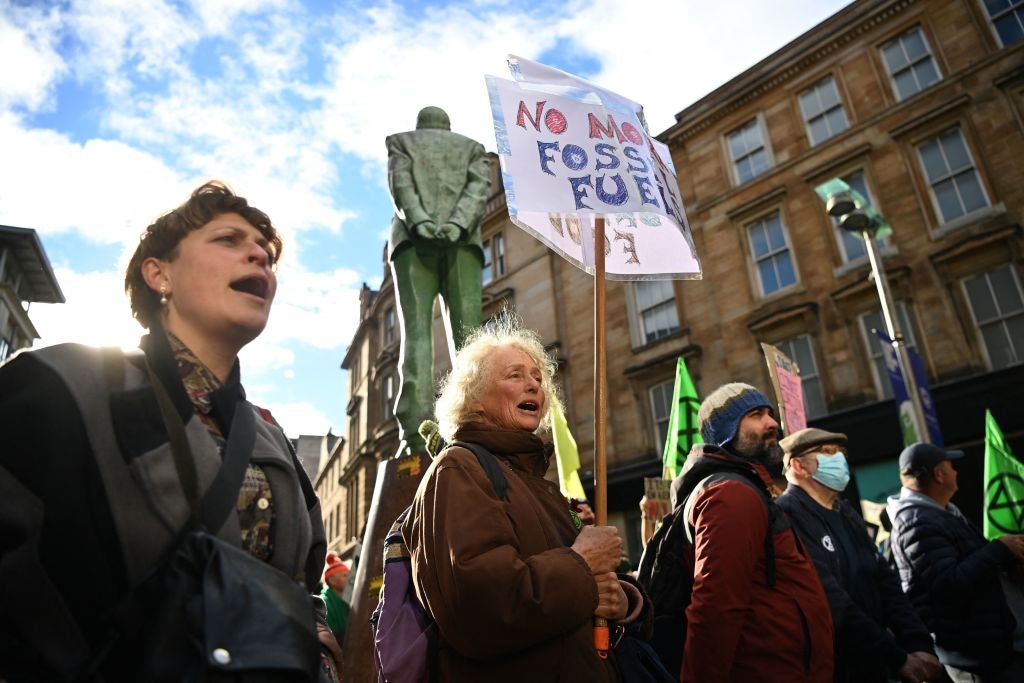
There is a long list of unfulfilled COP26 promises. However, the world leaders’ summit on the opening two days of the COP27 climate conference came with a flurry of shiny new announcements. These included a Forest and Climate Leaders Partnership to “protect, conserve and restore the world’s forests while delivering sustainable development and promoting an inclusive rural transformation”. Spain and Senegal also launched an International Drought Resilience Alliance, while the LEAF Coalition (Lowering Emissions by Accelerating Forest finance) announced $500m of new financing to protect tropical forests.
Elsewhere, US Climate Envoy John Kerry has unveiled a new voluntary global carbon credit trading initiative that will hopefully generate some of the trillions of dollars of funding required to help developing countries decarbonise. Several countries – including Austria, New Zealand and China – have said they would be willing to contribute to a climate loss and damage fund, which is a key outcome many developing countries are hoping for in the current climate talks.
Another UN climate conference, then, with another series of high-level announcements that offer incremental improvements in the climate fight, rather than the drastic action actually needed to keep warming to 1.5°C.
Not only are these commitments insufficient, there is also a growing sense they invariably lack substance. Indeed, if COP26 is anything to go by, it would seem the UN climate conference framework may be good at bringing countries together on paper, but it is not so good at ensuring implementation.
Unfulfilled COP26 promises
One of the most significant achievements of COP26 was the agreement from all parties that Nationally Determined Contributions (NDCs) – national climate plans and targets submitted to the UN – should be updated over the course of 2022, given that not enough was being done in policy to limit warming to 1.5°C. Yet at the start of COP27, just 28 countries had submitted new NDCs, with just five of those actually stronger than their previous iteration, according to Climate Action Tracker.
Another major achievement at COP26 was an agreement between 39 countries and financial institutions to end direct international public financing for fossil fuels by the end of 2022 and fully prioritise public finance for the clean energy transition. The shift from countries including the UK and US, and institutions such as the European Investment Bank, should redirect $28bn (€27.35bn) a year from fossil fuels to clean energy, according to analysis from the NGO Oil Change International (OCI).
Yet, one year later, while France, Sweden, Denmark, the UK and Finland have all fully halted finance to oil and gas fields and LNG infrastructure to deliver on the Glasgow pledge, Germany, Italy, Canada and the US have yet to publish policies that turn their promise into action, says the OCI’s Laurie Van der Burg, who helps oversee the NGO’s public finance database.
A recent report indicates the US trails other countries in implementing its pledge, having funded an annual average of $2.6bn in fossil fuel projects, compared with $358m for renewables, between 2019 and 2021. Meanwhile, a new Dutch policy announced just ahead of the latest COP for the credit agency Atradius Dutch State Business offers a transition period that allows continued support until the end of 2023 for project applications that have come in before the end of 2022, which is “in breach” of the agreed end of 2022 deadline for new support, says the OCI.
“Getting public finance out of fossil fuels is an urgent task,” says Charity Migwi, Africa regional campaigner, 350 Africa. “The Netherlands needs to stick to its promise to cut down all fossil fuel finance and instead provide climate finance to help countries in Africa leapfrog to a renewable energy future.”
Another achievement of COP26 was a signed declaration from 135 countries to halt and reverse forest loss and land degradation by 2030, but a recent Forest Declaration Assessment report published last month found that while the world would need to deforest 10% less area on average each year from 2021 to 2030, deforestation fell only 6.3% in 2021.
Hope is high that a new left-wing administration in Brazil will finally turn the tide on deforestation in the world’s largest rainforest nation. However, as things stand, the chasm between what was promised and has been achieved is stark: Brazilian President Jair Bolsonaro pledged last year to end Brazilian deforestation by 2028, but government data suggests forest clearing rose 23% in 2022, after hitting a 15-year high in 2021.
Another of the unfulfilled promises from COP26 pertains to methane. Last year’s COP also saw the formal launch of an EU and US-led global pledge to cut methane emissions by 30% by 2030, but the volume of methane in the atmosphere is increasing at record rates in 2022, shows World Meteorological Organization monitoring from more than 100 sites.
Some 46 countries also signed a Global Coal to Clean Power Transition Statement, yet reports have abounded this year that countries are planning to boost or resurrect their coal sectors as a means of reducing Russian President Vladimir Putin’s grip on energy markets. The IEA now believes 2022 could see world coal consumption equal the record currently set in 2013.
COP26 saw the launch of the Glasgow Financial Alliance for Net Zero, which is the world’s biggest climate-finance coalition, encompassing around $150trn of assets. Recent weeks, though, have seen a softening of language around the alliance’s commitment to exclude coal projects, and Race to Zero membership has been removed as a criterion of membership, reportedly to stop major banks from leaving.
Ongoing geopolitical tensions between China and the US – compounded in August after US House Speaker Nancy Pelosi visited Taiwan – has led to the suspension of formal climate talks between the world’s two largest emitters. This comes despite the US and China Joint Declaration on Climate Cooperation being one of the major achievements of COP26 just one year ago.
A final significant achievement of COP26 was the joint launch by Denmark and Costa Rica of the Beyond Oil and Gas Alliance (BOGA), which – along with France, Greenland, Ireland, Quebec, Spain and Sweden – presented itself as a “group of first movers” committed to phasing out all new fossil fuel development.
A year later, though, no other jurisdictions have joined these “first movers”. Despite the fanfare around the announcement last year, a new government in Costa Rica has said the alliance will not be a priority for the country at the current COP.
“BOGA is still alive even if it is perhaps not thriving, given international government bandwidth issues in the current energy crisis, as well as the change of government in Costa Rica,” says Lisa Fischer, from the think tank E3G. “The alliance was never about fast growth but about showing that transformation away from oil and gas economies is possible and showing that there is a support system out there for those who want to join,” she adds.
No choice but for optimism
The list of unfulfilled COP26 promises is long, but it has not all been doom and gloom going into the latest COP. There is a “real-world momentum that is going further and faster than the targets”, says Gareth Redmond-King from the non-profit Energy & Climate Intelligence Unit.
Data reveals the transition to clean energy continues at a breakneck pace, with a record 257GW of renewable electricity capacity installed in 2021, according to the International Renewable Energy Agency. In China, the 874GW of solar and wind capacity set to be added to the grid over the 2021–25 five-year plan is the same size as the entire electrical network of Europe. The Inflation Reduction Act, meanwhile, means that US wind power capacity should double and solar power capacity quadruple by 2030.
Even in the more abstract realm of climate negotiations, there are positives to hold on to. These include the fact that more than 90% of the world’s economy is now committed to net zero, and the disastrous 2.5°C of warming that current policies would put the world on track for is still better than the apocalyptic 4°C trajectory the world was on just a few years ago before the signing of the Paris Agreement.
With world leaders now gone, COP27 is now settling into the nitty-gritty of the climate negotiations, rather than adding to COP26’s list of unfulfilled promises. Resolutions to the key points of contention around adaptation and mitigation financing, as well as around the creation of a credible pathway to 1.5°C, still look painfully out of reach. However, delegates must try to build on the unexpectedly positive outcomes that have occurred at previous COPs, and channel all the goodwill that exists into constructive talks. We cannot afford not to be optimistic.




